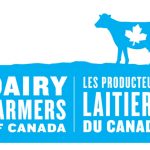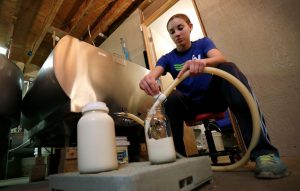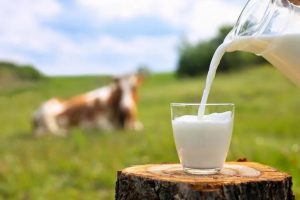
Fans of “raw-milk” cheese often argue that the dairy delicacies possess exceptional, complex flavor profiles that just can’t be replicated in the pasteurized stuff. But the tasty snack can come with a health risk and is the suspected cause of Escherichia coli infections that recently sickened several people.
Last month the U.S. Centers for Disease Control and Prevention reported a small E. coli outbreak that it said was linked to eating cheddar cheese from RAW FARM, a California-based dairy that ships nationwide. Eleven people who live in or traveled to California, Utah, Texas and Colorado, some of whom reported eating the product, tested positive for a specific strain of E. coli between October 18, 2023, and February 5, 2024. Five of them were hospitalized, and no deaths have been reported. The CDC also said there are likely more infections spanning additional states than currently documented because some people may have recovered without medical care, and recent cases are still under review.
RAW FARM voluntarily recalled its cheddar cheeses on February 16 and is conducting extensive testing with California’s department of public health and the U.S. Food and Drug Administration. So far all of its products have tested negative for E. coli, but the investigation is ongoing. The company lifted the recall last week, and its president Aaron McAfee told Scientific American that all of its cheeses are safe to eat. As of February 28, the CDC and FDA have said people should not to eat, sell or serve RAW FARM brand raw cheddar cheese while the investigation is still being conducted.
Without undergoing pasteurization—the process of sterilizing milk by heating it to a high temperature for a set time period—milk can become contaminated with harmful microbes, such as Salmonella, Listeria and E. coli, that can survive the cheese production and aging process. Scientific American spoke to experts about what gives raw-milk cheeses their sought-after tastes and how safe they are to eat.
HOW IS RAW-MILK CHEESE MADE AND REGULATED?
Cheeses around the world were made exclusively from raw milk until the late 19th century. In 1862 French chemist Louis Pasteur developed the pasteurization process. U.S. cheese manufacturers widely adopted the process by the late 1800s to curb the spread of foodborne illnesses. Today raw cheese production is still common in some European countries and is the method of choice at a few American dairies.
At Mecox Bay Dairy, a small, family-owned business in Bridgehampton, N.Y. that specializes in raw-milk cheeses, farmers bring milk straight from their herd of about 20 cows to a large tank to chill at 35 degrees Fahrenheit for up to an hour. Next they pump the milk into a vat where it is reheated up to 90 degrees F for culturing. (It is not pasteurized; pasteurization happens around 160 degrees F). The milk churns in the vat and curdles with the help of naturally occurring microbes called lactic acid bacteria that break down lactose. Finally the farmers shape the curds and store them in airtight rooms to age for a minimum of 60 days, as enforced by the U.S. Food and Drug Administration. “We make a lot of different kinds of raw cheese that need a variety of treatments, but everything is always aged for at least the 60 days and up to three years,” says Peter Ludlow, the dairy’s manager. “The softer the cheese, the shorter the age.”
The FDA began requiring that raw-milk cheeses age for at least 60 days at less than 36 degrees F in 1950, when research suggested it was the shortest time and lowest temperature needed for the cheeses’ salts and acids to break down lingering pathogens. Recent studies, however, have shown that some unfriendly bacteria can persist even longer, making soft, young cheeses—especially those, such as Camembert and Brie, that are treated with brine or other mold-bearing agents—the riskiest to eat. Some hard, mild cheeses that are aged for only a few months, including cheddar and Colby Jack, can be a health gamble, too.
Several years ago at Mecox Bay, the New York State Department of Agriculture and Markets detected Listeria bacteria in a soft cheese that was aged for 60 days. “We went through the recall process and everything, and thankfully there were no illnesses reported,” Ludlow says. “Family members, including myself, had all been eating the cheese and were fine…, and ironically we all thought it was a really good batch. But there’s zero tolerance for this, and after deciding it wasn’t worth the risk, we stopped making it.”
Ludlow says it’s still unclear why that particular batch of cheese was contaminated. The dairy’s cheese-making process was consistent, and its facilities were in prime shape. He’s learned throughout his 20 years in the business that making raw-milk products can be a game of chance. “There’s really no way to tell if there’s a pathogen in [the cheese] as you’re manufacturing it,” he says. “We have our environmental controls; we do environmental testing; and we personally sample all of the products ourselves. That’s really all we can do.”
At RAW FARM, which sells cheese in 36 states, McAfee says his team follows a strict food safety protocol to catch and minimize the pathogens that naturally form in raw milk. They bathe and test the cows at least once a week and quarantine them for further evaluation if harmful bacteria are detected. They also try to ensure the udders—which remain open for about 30 minutes after milking—are not exposed to bacteria and fecal matter when the cows sleep. “We make sure their bedding is clean and made of high-pH materials like almond shells and dehydrated limes that are generally inhospitable to pathogens,” McAfee says. With a herd of more than 1,200 cows, the farm’s pathogen testing and prevention process is costly but not nearly as much as a large recall can be.
WHY IS RAW-MILK CHEESE SO POPULAR?
Raw-milk cheese’s popularity in the U.S. can be accredited mainly to marketing tactics, says Carlos Yescas, who has judged the World Cheese Awards and is a co-founder of Lactography, the first artisan cheese distribution company in Mexico. A century ago, when pasteurization became the norm, milks and cheeses were advertised as safe and pathogen-free compared with their raw counterparts—but now the pendulum is starting to swing the other direction, Yescas says. Raw-milk cheeses are commonly marketed as the less processed, more nutrient-rich option, a claim still widely debated by microbiologists. “[Raw-milk cheese] is now very trendy among people seeking a healthy, high-end lifestyle,” he says. “For a while it was about ease, with Velveeta, Kraft Singles and all of that kind of cheese. Now people want what seems real.”
After sampling thousands of cheeses over his 15-year career in the international dairy industry, Yescas also thinks that those made from raw milk just taste better. A cheese’s flavor and texture are largely determined by the microbes living inside of it. During pasteurization, most of the milk’s natural bacteria, both “good” and “bad,” are eliminated, depriving the end product of some of its original character, he explains. But the distinct flavors maintained in raw-milk cheeses may be noticed only by experienced cheese tasters, Yescas says. “I had exposure to raw-milk cheese back when I was little, growing up in Mexico, and later in college in the United States,” he adds. “But if you’re not used to it and grew up eating pasteurized cheese, the difference [in flavor] might not be so clear.”
IS RAW-MILK CHEESE SAFE TO EAT?
Many people make internal risk assessments before consuming food, whether it’s cookie dough made with raw eggs, an oyster from a raw bar or a piece of toast that’s fallen on the floor butter-side down. When it comes to raw-milk cheese, Cornell University food safety and science professor Mark Wiedmann usually talks himself out of the indulgence. He says it’s true that pasteurization can kill off some microbes in milk that are good for the human gut, but the risk of illness from unpasteurized milk products is rarely worth the benefits. Children, adults aged 65 or older, pregnant people and immunocompromised people, all of whom may especially have difficulty fending off pathogens from cheese, should always opt for the pasteurized goods.
Still, Wiedmann acknowledges that risk-based choices are not black and white, including choosing whether to eat delectable but potentially dangerous raw-milk cheeses. When he does occasionally take his chances, Wiedmann typically treats himself to a hard, years-aged raw Parmesan or pecorino romano—likely among the least germy of the cheese family, he says. The cheese-eating setting matters, too, he says. In the most idyllic surroundings, he may even be persuaded to luxuriate in tasting a raw Camembert. “If I’m in France with some friends around fresh raw cheese and a good bottle of wine, I’m not going to be the social outcast who doesn’t eat the cheese, you know?” Wiedmann says. “It does taste really good.”























